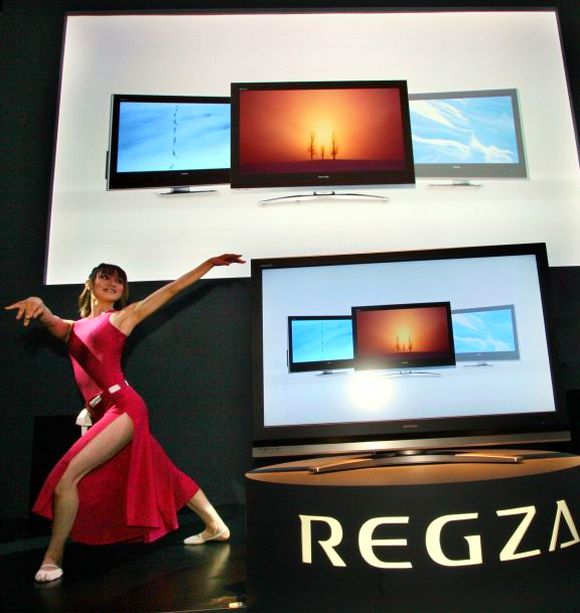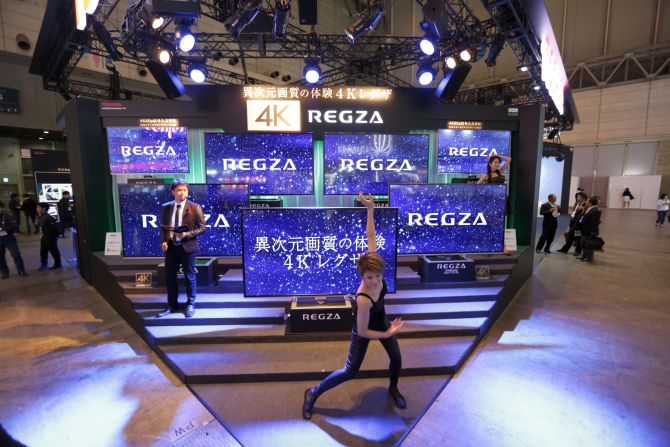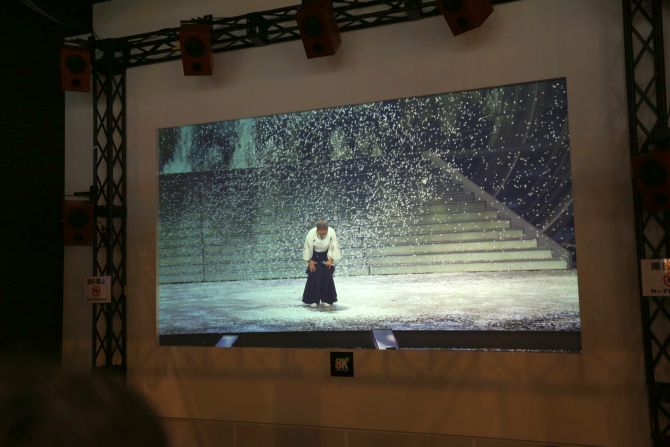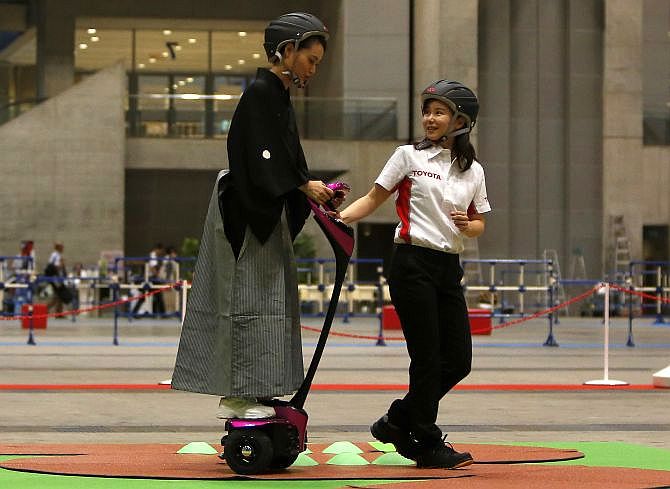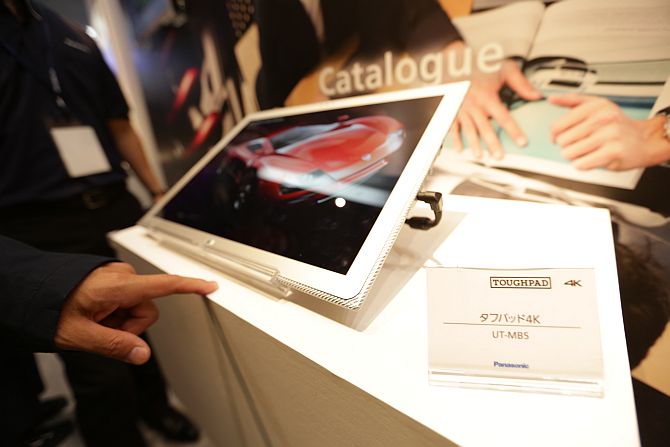 | « Back to article | Print this article |
7 coolest futuristic gadgets from Japan's biggest tech show
Two and half years ago Japan was hit by a massive earthquake, the tsunami and even now there are reports of radioactive water leakage from the Fukushima Daiichi Nuclear Power Plant, located about 240 kilometers from Tokyo.
But I would not have a sense of that walking the floors of CEATEC (Combined Exhibition of Advanced Technologies) - Japan’s largest consumer electronics show.
Running from October 1-5 in Makuhari, just outside Tokyo, the show brings together many of the companies showing their products that are not yet available to consumers in North America, Europe or even Asia, but will shape the market going forward.
Here are some of the cool things I saw at this year’s CEATEC, a sense of what the future holds for the world of automotive and consumer electronics.
Click NEXT to see the coolest futuristic gadgets from CEATEC…
7 coolest futuristic gadgets from Japan's biggest tech show
Sharper TVs
Sony already has 4K TVs selling in the US and Europe. At CEATEC Toshiba had a huge display of their version of the REGZA brand 4K TVs. And the televisions are becoming affordable, experts say.
But the problem is at present there is not much content, other than films produced by the Japanese company’s Hollywood studio, and video games.
“Regular networks are not shooting and broadcasting in 4K,” says Tim Stevens, an editor at CNET and one of the judges at CEATEC. And that transfer of broadcast technology may not happen soon, he adds.
Click NEXT to read more…
7 coolest futuristic gadgets from Japan's biggest tech show
8K TVs
This year at CEATEC, Japanese giants Panasonic and NHK displayed their 8K TVs, with four-times the resolution of the HD TVs that we have in homes in the US.
The first application for the 8K TVs would be for displays at shows and large concerts and sporting events. With the launch date of 2020, Panasonic and NHK are aiming to be ready with the giant TVs for the Tokyo Olympics.
Click NEXT to read more…
7 coolest futuristic gadgets from Japan's biggest tech show
NTT Docomo’s Intelligent “Terminator” Glasses
NTT Docomo is Japan’s largest mobile phone service provider. But the company is also vastly ahead in developing innovative technologies that will make the consumers’ lives easier.
At CEATEC, Docomo has displayed their version of Intelligent Glasses (a concept similar to Google Glass). At the show we saw how a customer at a restaurant can look at a menu in Japanese and the DOCOM glasses will translate each food item into English.
But the possibilities are endless, says Hubert Nguyen, co-founder and editor of ubergizmo.com and another judge at CEATEC.
The glasses use augmented reality technology, he adds. The screen covers your whole vision and information can be added anywhere in your field of vision.
“It is like in The Terminator,” Nguyen says. “The Terminator would see a person and then the message on his glasses would identify the person. Similarly by using Facebook or Google+ these glasses could also recognise a ‘friend.’”
Click to see Docomo's Intellifent Glasses in action
Click NEXT to read more…
7 coolest futuristic gadgets from Japan's biggest tech show
Nissan’s Autonomous Drive Car
Last year Nissan brought their Smart Car 2015, an electric vehicle that can park by itself, with directions from the owner’s smartphone.
This year’s new Autonomous Drive car - expected to be launched by 2020, uses artificial intelligence that makes it think.
With five laser scanners and five cameras it is more than just your personal chauffeur. Its 360-degree view of the road is designed to reduce car accidents and traffic congestion as well as expand mobility for the elderly or disabled.
While that sounds like something out of a futuristic film like Blade Runner, Nissan will point out that an Autonomous Drive car really means that the driver will provide less input to the vehicle.
A Nissan spokesperson said: “It isn’t a driverless car. The driver will need to sit in the car and will always have the option of taking over the steering wheel.”
Click NEXT to read more…
7 coolest futuristic gadgets from Japan's biggest tech show
Toyota’s Winglet
Toyota has taken the older concept of Segway and introduced a lighter and more user-friendly transportation device.
The Segway was far too expensive in the US and Toyota is aware of that. It was engineering that made it very expensive, says Nguyen.
It was the first of its kind, with the self-balancing technology. “Hopefully Toyota can do it a little bit cheaper,” Nguyen adds.
Another judge Michael Kanellos of EastWick Corporation says the Winglet is less dorky as compared to Segway.
“You balance with your knees, it is almost like skiing,” he says. “You lean forward to move, left to turn left, lean right to turn right and backwards to stop. It runs on electricity. Goes 6 kilometers an hour and turns pretty well. It’s zippier and fun.”
Click to watch a video of Toyota Winglet in action
Click NEXT to read more…
7 coolest futuristic gadgets from Japan's biggest tech show
Kyocera - Smart Sonic Speakers
Kyocera introduced one of the smartest innovations at CEATEC–Smart Sonic Sound speaker. It is not only the world’s thinnest speaker and but it has the best sound quality.
A spokesperson for Kyocera says the new speaker can be used in PCs, tablets, cars and television. With normal speakers the sound gets projected out of cone, but the Smart Sonic gives almost the same amount of sound in 180 degrees perspective.
The speaker is already being used in LG’s 55-inch curved screen televisions (also on display at CEATEC).
It can even work well in a car. Instead of side panels of the car that carry speakers, the Super Sonics could be placed on the ceiling of the car and you get equal sounds projected all around.
Click NEXT to read more…
7 coolest futuristic gadgets from Japan's biggest tech show
Panasonic’s ToughPad Tablet
Apple popularised the idea of tablets with its iPad. Others have followed Apple’s design but they have not been able to make a huge impact on the market share for tablets.
This year Panasonic introduced its own version of the tablet –Panasonic ToughPad UT-MB5, a 20” tablet that runs on Window 8.1 and had a 4K resolution. The very impressive looking tablet weighs only 2.35 kilograms (or slightly over 5 pounds).
It is ideal for professionals who want to work with high-resolution images. And that would include architects who want to show detailed layout designs of buildings or floors.
Later this year the tablet is expected to be out in Europe, parts of Asia and even the US. The cost is still high - 4,500 Euros or over $6,000, but it is only a matter of a year or so when prices should drop.
